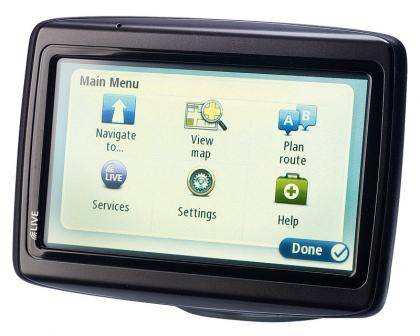If you read our review of the Go 1000 Live , but were hoping for a cheaper version, you're in luck: TomTom has launched the Via Live 120. It has almost all the benefits of the 1000, but costs well under £200.
The 4.3in screen is the same size and same resolution, and you get the same revamped interface with simplified, logical menus. Planning a route is incredibly easy, partly because there are so many ways to choose a destination. Google Local Search is particularly good as this removes the limit of the points of interest database, although just about every satnav with mobile data now has this facility.

Route calculation is slightly quicker than on older Go models as the internal memory stores pre-calculated routes between any two points - this also makes route recalculations quicker. As ever, routes are planned using real road speed data, so you'll always be on the optimal route regardless of the time of day, or day of the week. Add to this HD Traffic, and you've got the most up-to-date information on jams: as soon as there's a faster route available, the Via Live 120 will ask if you want to take it, or automatically switch to it if you've set this in the options. Live services are free for the first year, then a shade under £50 annually after that.
Spoken directions are very clear, and most road names are pronounced correctly. Lane guidance is also clearer than the old software version, but the difference is subtle. We still like the redesigned information bar, which splits speed, turn directions and journey time into three sections. The tweaked traffic information bar is also clearer. Tap the traffic bar and you can quickly check if there are any delays on your commute. Another button reads the traffic information aloud; in a separate menu, you can see a live weather forecast for your current location or destination, which can also be read out.
Clearly, costs have had to be cut somewhere and the most obvious is the touchscreen. Where the Go 1000 has a capacitive screen, the 120 has the same resistive screen as most satnavs. This means it doesn't support pinch-to-zoom, nor swiping between menus. If you're used to a capacitive screen, perhaps on your smartphone, it feels like a step backward to have to prod the screen hard to register your intentions.
